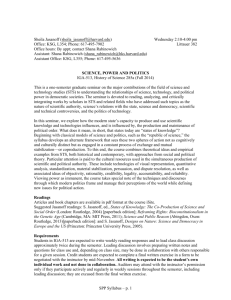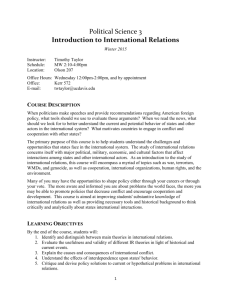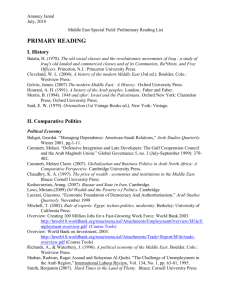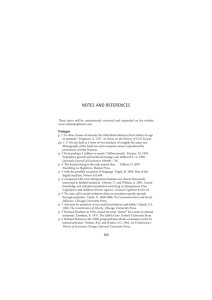Readings for diplomacy and strategy
advertisement
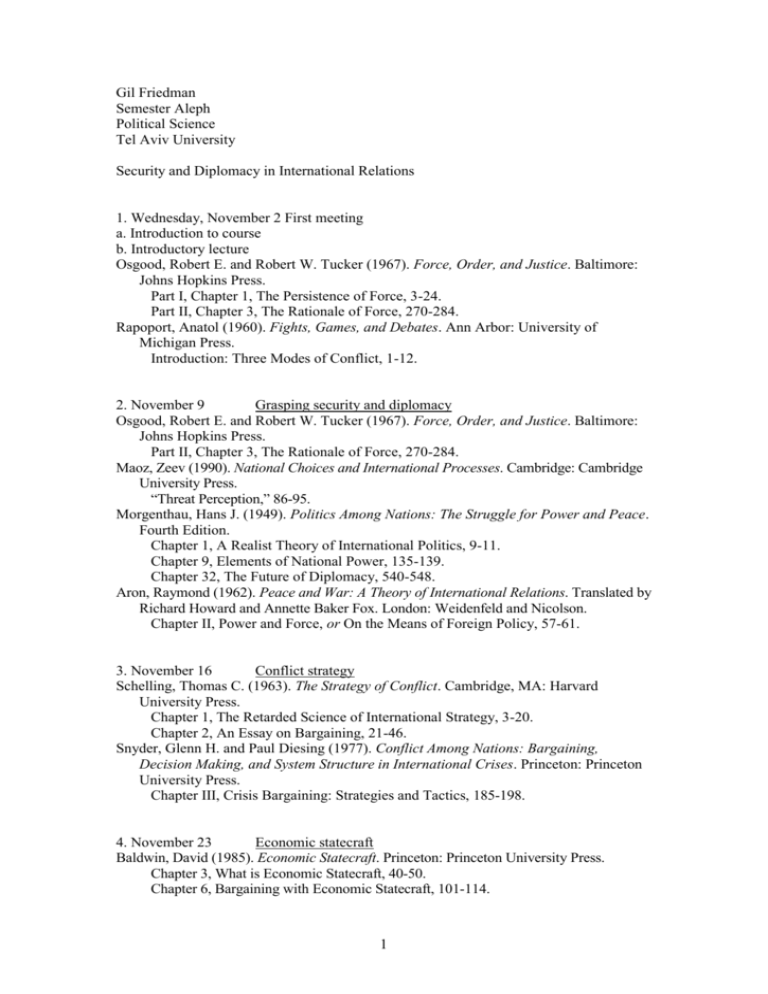
Gil Friedman Semester Aleph Political Science Tel Aviv University Security and Diplomacy in International Relations 1. Wednesday, November 2 First meeting a. Introduction to course b. Introductory lecture Osgood, Robert E. and Robert W. Tucker (1967). Force, Order, and Justice. Baltimore: Johns Hopkins Press. Part I, Chapter 1, The Persistence of Force, 3-24. Part II, Chapter 3, The Rationale of Force, 270-284. Rapoport, Anatol (1960). Fights, Games, and Debates. Ann Arbor: University of Michigan Press. Introduction: Three Modes of Conflict, 1-12. 2. November 9 Grasping security and diplomacy Osgood, Robert E. and Robert W. Tucker (1967). Force, Order, and Justice. Baltimore: Johns Hopkins Press. Part II, Chapter 3, The Rationale of Force, 270-284. Maoz, Zeev (1990). National Choices and International Processes. Cambridge: Cambridge University Press. “Threat Perception,” 86-95. Morgenthau, Hans J. (1949). Politics Among Nations: The Struggle for Power and Peace. Fourth Edition. Chapter 1, A Realist Theory of International Politics, 9-11. Chapter 9, Elements of National Power, 135-139. Chapter 32, The Future of Diplomacy, 540-548. Aron, Raymond (1962). Peace and War: A Theory of International Relations. Translated by Richard Howard and Annette Baker Fox. London: Weidenfeld and Nicolson. Chapter II, Power and Force, or On the Means of Foreign Policy, 57-61. 3. November 16 Conflict strategy Schelling, Thomas C. (1963). The Strategy of Conflict. Cambridge, MA: Harvard University Press. Chapter 1, The Retarded Science of International Strategy, 3-20. Chapter 2, An Essay on Bargaining, 21-46. Snyder, Glenn H. and Paul Diesing (1977). Conflict Among Nations: Bargaining, Decision Making, and System Structure in International Crises. Princeton: Princeton University Press. Chapter III, Crisis Bargaining: Strategies and Tactics, 185-198. 4. November 23 Economic statecraft Baldwin, David (1985). Economic Statecraft. Princeton: Princeton University Press. Chapter 3, What is Economic Statecraft, 40-50. Chapter 6, Bargaining with Economic Statecraft, 101-114. 1 Chapter 7, National Power and Economic Statecraft, 130-144. Chapter 9, Foreign Trade, 214-217, 251-261. 5. November 30 Force versus moral suasion as bases of influence Machiavelli, Niccolo (1997). The Prince. Trans. By Angelo M. Codevilla. New Haven: Yale University Press. Chapter XVII, Of cruelty and pity; and whether it is better to be loved than feared, or the contrary, 61-4. Chapter XIX, On fleeing contempt and hatred, 68-76. Machiavelli, Niccolo (1996). Discourses on Livy. Translated by Harvey C. Mansfield and Nathan Tarcov. Chicago: University of Chicago Press. Part II, Chapter 2, What Peoples the Romans Had to Combat, and That They Obstinately Defended Their Freedom, 129-133. Part II, Chapter 3, Rome Became a Great City through Ruining the Surrounding Cities and Easily Admitting Foreigners to Its Honors, 133-135. Part II, Chapter 14, Often Men Deceive Themselves Believing That through Humility They Will Conquer Pride, 156-157. Part II, Chapter 26, Vilification and Abuse Generate Hatred against Those Who Use Them, without Any Utility to Them, 191-193. Part III, Chapter 9, How One Must Vary with the Times If One Wishes Always to Have Good Fortune, 239-241. Part III, Chapter 20, One Example of Humanity Was Able to Do More with the Falisci Than Any Roman Force, 261-262. Part III, Chapter 21, Whence It Arises That with a Different Mode of Proceeding Hannibal Produced Those Same Effects in Italy as Scipio Did in Spain, 262264. Part III, Chapter 27, How One Has to Unite a Divided City; and How That Opinion Is Not True That to Hold Cities One Needs to Hold Them Divided, 274-276. Nye, Joseph S. (2004). Soft Power: The Means to Success in World Politics. New York: Public Affairs. Chapter One, The Changing Nature of Power, 5-18. 6. December 7 The justness and justification of force Osgood, Robert E. and Robert W. Tucker (1967). Force, Order, and Justice. Baltimore: Johns Hopkins Press. Part II, Chapter 1, The Need to Justify Force, 204-206, 210-218. Part II, Chapter 2, The Moral Economy of Force, 233-236, 241-242. Part II, Chapter 3, The Rationale of Force, 289-314. Elshtain, Jean Bethke (2003). Just War Against Terror. 7. December 14 Liberalism and security policy Kirkpatrick, Jeane (1979). “Dictatorships and Double Standards.” Commentary (November):7-21. Holsti, Ole R. and James N. Rosenau (1990). “The Structure of Foreign Policy Attitudes among American Leaders,” Journal of Politics 52(1):94-107. Smith, Tony (2000) “National Security Liberalism and American Foreign Policy,” 258274. In, American Foreign Policy: Theoretical Essays, Fourth Edition (2002), Edited by G. John Ikenberry, New York: Longman. 2 8. December 21 Domestic politics and foreign policy Russett, Bruce (1990). Controlling the Sword: The Democratic Governance of National Security. Cambridge, MA: Harvard University Press. Chapter 4, Who Controls Whom? 87-118. Jacobs, Lawrence R. and Benjamin I. Page (2005). “Who Influences U.S. Foreign Policy?” American Political Science Review 99(1):107-121. 9. December 28 Psychological and organizational aspects of foreign policy-making Jervis, Robert (1976). Perception and Misperception in International Politics. Princeton: Princeton University Press. Chapter Four, Cognitive Consistency and Interaction, 117-119, 128-155. Allison, Graham and Philip Zelikow (1999). Essence of Decision: Explaining the Cuban Missile Crisis. New York: Addison Wesley Longman. Chapter 3, Model II: Organizational Behavior, 163-183. Sunday, January 1, 2006—Hanukah holiday 10. January 4 Logics of de-escalation and cooperation Wagner, R. Harrison (1993). “The Causes of Peace,” 241-264. In Stopping the Killing: How Civil Wars End, Edited by Roy Licklider, New York: New York University Press. Zartman, I. William (1989). Ripe for Resolution: Conflict and Intervention in Africa. New York: Oxford University Press. Chapter 6, Conflict Resolution in Africa, 263-280. Oye, Kenneth A. (1986). “Explaining Cooperation under Anarchy: Hypotheses and Strategies,” 1-24. In, Kenneth A. Oye, ed., Cooperation Under Anarchy. Princeton: Princeton University Press. 11. January 11 Toward conflict resolution Agha, Hussein, Shai Feldman, Ahmad Khalidi, and Zeev Schiff (2003). Track II Diplomacy: Lessons from the Middle East. Cambridge, MA: MIT Press. Chapter 9, Analysis, 133-154, 161-166. Rouhana, Nadim N. (2000). “Interactive Conflict Resolution: Issues in Theory, Methodology, and Evaluation,” 294-310, 312-322. In, International Conflict Resolution after the Cold War. Edited by Paul C. Stern and Daniel Druckman. Washington, D.C.: National Academy Press. 12. January 18 Negotiation theories Raiffa, Howard (1982). The Art and Science of Negotiation. Cambridge: Harvard University Press. Chapter 1, “Some Organizing Questions,” 11-19. Chapter 4, “Analytical Models and Empirical Results,” 44-65. Chapter 9, “Advice for Negotiators,” 119-30. 3 Neale, Margaret A. and Max H. Bazerman (1991). Cognition and Rationality in Negotiation. New York: The Free Press. Ch. 2, “Prescriptions for a Decision Analytic Perspective,” 35-8. Ch. 3, “Individual Biases in Negotiations,” 41-48. Ch. 4, “Negotiation Biases,” 61-70. 13. January 25 International agreements, institutions and security Braun, Chaim and Christopher F. Chyba (2004). “Proliferation Rings: New Challenges to the Nuclear Nonproliferation Regime.” International Security 29(2):5-49. Schweitzer, Yoram (2003). The Globalization of Terror: The Challenge of al-Qaeda and the Response of the International Community. Friday, February 3rd—last day of the semester 4

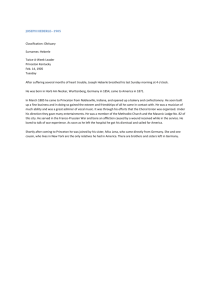

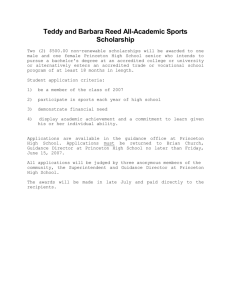
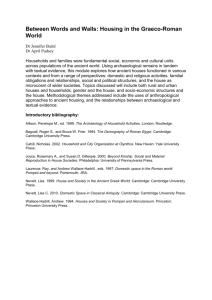
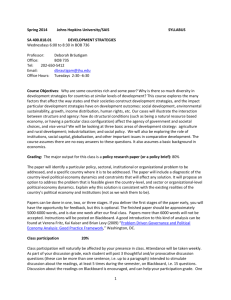
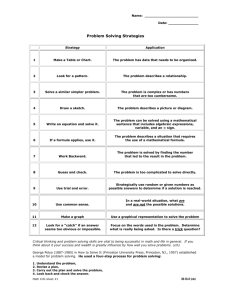
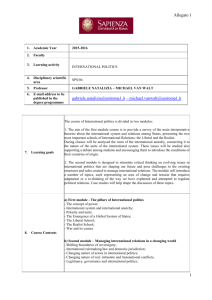
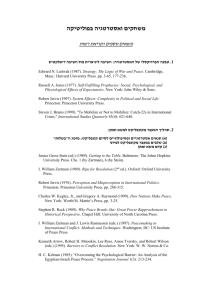
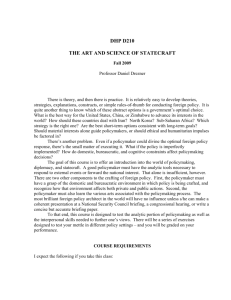
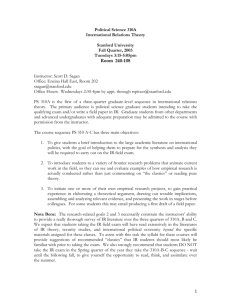
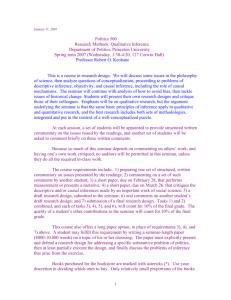
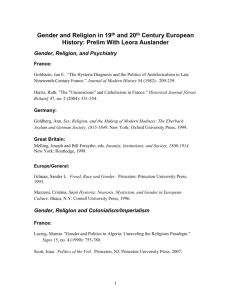
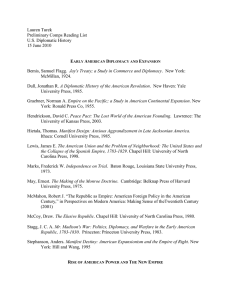
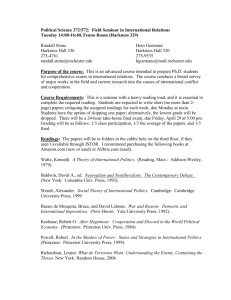
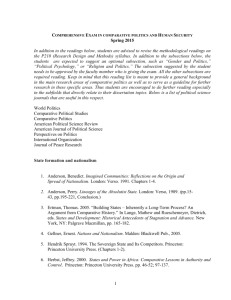
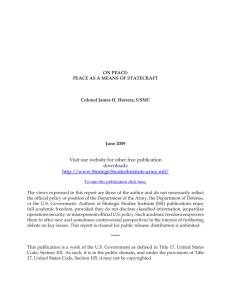
![[I-204] International Political Economy](http://s3.studylib.net/store/data/009064983_1-2fda3db3885527f85c74a193f6f73efd-300x300.png)
